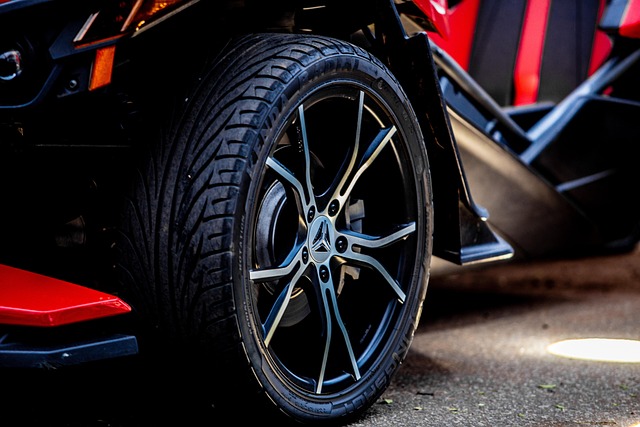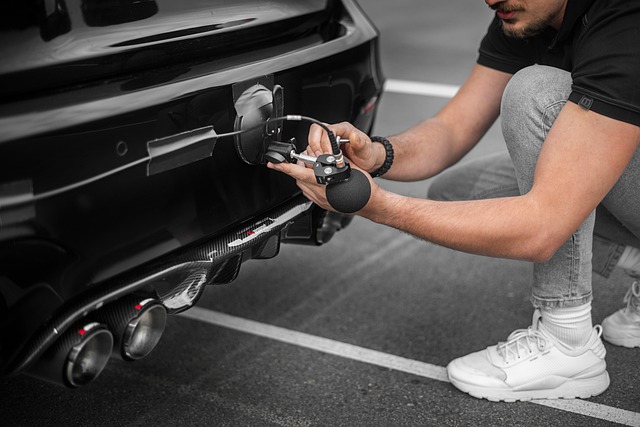Looking to register your car in California? This comprehensive guide walks you through the entire process, ensuring a smooth experience. From understanding crucial requirements and gathering essential documents to performing a DMV VIN verification step-by-step, we’ve got you covered. By following these straightforward steps, you’ll be driving legally and confidently in The Golden State in no time.
- Understand California Car Registration Requirements
- Gather Necessary Documents for DMV Visit
- Perform VIN Verification: Step-by-Step Guide
- Complete Application Process at the DMV
- Obtain License Plate and Register Your Vehicle
Understand California Car Registration Requirements

Before registering your car in California, it’s crucial to understand the state’s specific requirements. The California Department of Motor Vehicles (DMV) mandates several steps for a successful registration, including a thorough vehicle inspection. One critical aspect is the DMV VIN verification process, where the unique Vehicle Identification Number (VIN) of your car is cross-referenced with manufacturer records to ensure its authenticity and history. This step is essential to prevent fraud and ensure safety.
Additionally, for a smoother registration experience, consider utilizing mobile VIN verification services. These services offer convenient alternatives by providing on-site or remote inspections using advanced technology. A mobile vin inspection ensures your car meets all necessary standards, making the registration process faster and more efficient.
Gather Necessary Documents for DMV Visit

Before visiting a California DMV office, make sure to gather all the essential documents required for car registration. This includes your vehicle’s Registration Application (Form MV-1), which can be obtained online or in person. Additionally, you’ll need proof of insurance, a valid driver’s license, and the Certificate of Title (or Proof of Ownership) for your vehicle. The latter is crucial, especially when transferring ownership.
Among these, the Vehicle Identification Number (VIN) plays a vital role in the registration process. Ensure that you have accurate and up-to-date information regarding your car’s VIN. This can be easily verified through a mobile vin verification service or by conducting a simple vin inspection using official tools. Having all these documents ready will significantly streamline your visit to the DMV, making the car registration process more efficient.
Perform VIN Verification: Step-by-Step Guide

Performing a Vehicle Identification Number (VIN) verification is a crucial step in registering your car in California with the DMV. This process ensures that the vehicle’s details match the information on record, preventing fraud and ensuring safety. Here’s a step-by-step guide to help you complete this task efficiently:
1. Obtain Your VIN: Start by locating your vehicle’s VIN, usually found on the driver’s side door frame or in the car’s engine bay. For older vehicles, it might be inscribed on permanent plates attached to these areas. If you have a title or registration documents, the VIN is typically printed clearly on them.
2. Use a Mobile Vin Verifier: To streamline the process, consider employing a mobile vin verifier app or service. These tools allow you to input your VIN and receive instant, detailed vehicle history information from various databases. They can check for accidents, outstanding loans, and other issues that might prevent registration. Some popular options include [name of reliable apps/services].
3. DMV Vin Verification: If you prefer a more traditional approach or need to meet specific requirements, you can perform the VIN verification through the California DMV. Visit their website or a local DMV office to access their online tools or request a physical inspection. The process may involve submitting your VIN and relevant documents, followed by an inspection of the vehicle (or its title/registration records) against the DMV’s database.
4. Document Your Results: Keep records of all verification results, including any reports from mobile vin inspectors or official DMV documents. These will be essential when filing for registration and can help expedite the process.
Complete Application Process at the DMV

To register your car in California, the first step is to complete the application process at your local DMV office. You’ll need several key documents, including proof of ownership, identification, and current auto insurance. The process involves submitting an Application for Title and Registration form, along with the required fees. During this time, you’ll also be required to undergo a DMV VIN verification, which ensures the vehicle’s identity matches the information on the title.
This verification can be completed efficiently through various methods, including a mobile VIN inspection or vin inspection service that can come to your location for added convenience. Once all documents are in order and verified, the DMV will process your application, resulting in a new registration certificate and license plate for your vehicle.
Obtain License Plate and Register Your Vehicle

After completing your vehicle’s purchase, it’s time to obtain a license plate and register your new car with the California Department of Motor Vehicles (DMV). The registration process involves several steps, including verifying the Vehicle Identification Number (VIN) to ensure the vehicle’s history is clear. You can perform this VIN verification online or through a mobile vin verifier for convenience. Once your VIN inspection is complete, you’ll need to gather necessary documents like proof of ownership and insurance.
Next, visit your local DMV office or use their online registration portal. You’ll be required to present the verified VIN and other required documents. The staff will process your application, issue a license plate, and provide you with a registration certificate. Ensure all information is accurate to avoid future issues during renewals or mobile vin verification processes.
Registering a car in California involves understanding key requirements, gathering essential documents, and completing straightforward processes. By following our step-by-step guide, including performing a DMV VIN verification, you’ll ensure your vehicle is legally registered and ready to hit the road. This process streamlines ownership transfer and keeps California’s roads safe for all.



